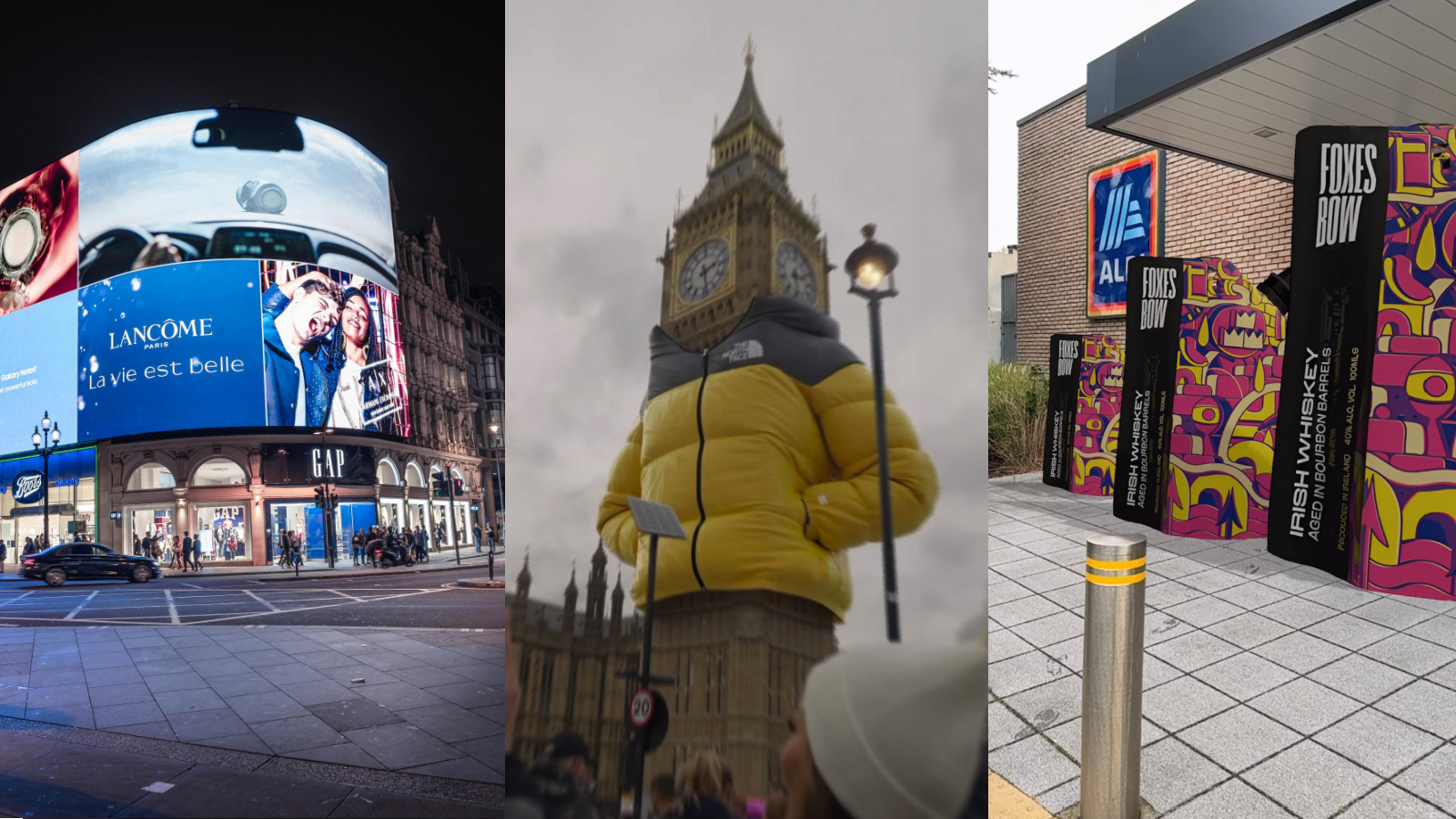For centuries, humans have sought new ways to explore the world around them. From the winding footpaths of ancient civilisations to the meticulously designed nature trails of today, walking trails have long served as a means of physical activity, historical discovery, and connection with the natural world.
Traditional walking trails often feature physical signs, brochures, or guided tours. In recent years, technology has taken exploration to a whole new level. Audio walking tours, with their narrated guides and historical insights, have become a popular way for visitors to delve deeper into the stories behind landmarks and landscapes.
Today, we are on the cusp of another evolution with Augmented Reality (AR) transforming walking trails, creating a new breed of immersive experiences. These are self-guided tours where the users use their own device (BYOD) to interact with AR content that blurs the line between digital and physical.
What is an AR Walking Trail?
Imagine you're strolling through a historic city centre, phone in hand, and you come across a monument that explains the impact of the Vikings on the city. You hold up your phone to the statue and suddenly, a Viking warrior appears before you, their armour gleaming in the virtual sunlight. You hear the voice of a long-dead leader recounting a pivotal moment in history and possibly witness a historical recreation of a famous interaction at this location This is the magic of an AR walking trail.
An AR walking trail, sometimes known as an AR digital story trail, blends the physical and digital worlds by combining the physical act of walking with a digital layer of information and storytelling. Users explore a location while using a mobile device to view AR content overlaid onto the real world that brings history, culture, and even folklore to life. This can include 3D models, photographs, animations, audio, and interactive elements. AR walking trails offer an engaging and immersive way to experience a location, making it more dynamic and interactive.

We have selected the five key elements to consider when building an AR walking trail: the location, the story, the content, the connectivity, and the device. Understanding and optimising these elements has allowed us to provide a seamless and captivating experience for our clients and will surely empower you to take your first step.
1. Understanding the Physical Location
Understanding your location is the foundation for your entire narrative. Each location has unique attributes that can either enhance or detract from the AR experience. We begin by taking a comprehensive assessment of the existing structures, historical or cultural landmarks and areas of interest that can be strategically incorporated into your AR narrative. Do they complement your planned story, or will they obstruct them? Buildings, monuments, and natural features can serve as backdrops or focal points for your AR content.
Next, it is important to consider the available space. Ensure there is ample space for users to move around comfortably. Crowded or cramped areas can diminish the user experience. Identify any potential safety hazards in the environment, such as busy roads, uneven terrain, or low-hanging branches. We mitigate these risks by incorporating safety alerts within the AR experience and highlighting safe walking paths.
Experience Spotlight..
When creating our Sydney City and Coastal Heritage Trails, we identified statues in open parks, including Captain Cook and Captain Bligh, that are easily recognisable, connected to rich historical stories, and surrounded by plenty of space, the ideal location for life-sized, location-based AR experiences.
It was our utmost priority to ensure safety while recreating historical buildings and structures like the Victorian-era Coogee Pier, now marked by the rainbow steps popular with locals and tourists. To maintain that, we ensured the AR experience vanishes if the user gets too close to the steps, ensuring a secure and enjoyable experience for everyone.


2. Crafting a Compelling Story
The story is the heart of your AR walking trail. It guides the user through the experience and keeps them engaged. What story do you want to tell? Decide whether your story will be a narrated journey, told from a first-person perspective and/or delivered through dialogues to immerse them in the narrative, or is it a new world that they explore at their own pace. Understand the target audience better for your AR walking trail. Will it be geared towards families and children, seeking fun and engaging content for instance our Carlichauns Adventure Trail? Or will it cater to the tourists who are there to understand the culture of that place like our Waterford’s Digital Story Trail? Maintaining a consistent and engaging tone throughout the experience is crucial. Overall, ensure your story is cohesive and flows logically from one point to the next. Users should feel like they are on a journey rather than encountering disjointed pieces of information.
Experience Spotlight..
Our Spike Island Experience offers a compelling narrative spanning over 1,300 years of Irish history. Told through first-hand accounts and supported by a narrator, visitors embark on a journey through time that captures the evolving essence of the island. Beginning as a serene and tranquil monastery in 600 AD, Spike Island transformed into a British military fort, served as a prison during the dark famine era, and functioned as a modern prison in the 1980s. The story of Spike Island is filled with reflection, shock, horror, sadness, politics, and, at its core, the story of humanity.

3. Developing Dynamic Content
Content is the medium through which your story is conveyed. AR walking trails can utilise a variety of content types like 3D objects, images, videos and event audio. Location-based 3D objects are a powerful tool to create a more immersive experience like digital models of historical figures or the reconstruction of long-gone structures brought back to life.
Don't underestimate the power of historical photos and video documentation. These can be integrated into your AR experience, allowing users to compare the past with the present and gain a deeper understanding of the location's evolution. Although audio guides have long been a staple of traditional walking tours, AR technology allows you to take this concept a step further. Using audio to provide narration and sound effects, on top of a 3D scene the visitor can explore by walking around with their phone, along with elements that visitors can interact with truly create an immersive experience and involve maximum sensory engagement.
Experience Spotlight..
Monto AR sheds light on a dark and forgotten period of Dublin’s history, focusing on an area that was once Europe’s largest red-light district. This immersive experience features a rich blend of AR content, including restored archival photos placed in their original locations, recreated buildings that no longer exist, and 3D animations depicting the lives of the people who once inhabited the area.

The Monto AR story allows users to see a recreated old tenement building in 3D where a park now stands. As users approach the windows, they can peer inside and view old photographs from the time period, showing what these rooms looked like. As they approach the windows, the users can even hear the stories about life at the time.

4. Easing the Navigation
Effective navigation and wayfinding are crucial to ensure that users can easily follow the AR walking trail. For years, people have navigated with maps, and your AR experience should include a clear map, such as an example from our Sydney City Trail, to guide users from point A to point B. Between points, consider using audio playback so users can focus on their surroundings instead of their phones. At specific feature points, use AR visuals. While AR navigation is possible, as demonstrated by Google, it is not always required. Determine the best navigation method based on your specific trail. Having a clear starting point, or trailhead is essential which can be supported by signage (although not mandatory), helping users identify the location of the AR experience. Ensure navigation is seamless and intuitive, requiring minimal thought so users can focus on enjoying the AR experience.

5. Fulfilling the Technical Needs
Connectivity
Connectivity is a crucial factor and becomes imperative to focus on. Many historical locations museums, heritage sites, and even nature reserves can have limited internet connectivity, particularly indoors with thick walls. In such areas it becomes crucial that users can download and pre-load the entire experience onto their devices before they begin, ensuring a seamless experience without a constant internet connection. This will make your trail more accessible and reliable. We at Imvizar mandatorily ensure that all of our walking trails work offline once downloaded.
Device
Users will access your AR walking trail on a variety of devices from smartphones and tablets to specialised AR glasses (someday soon!), so it's important to ensure compatibility. Optimise your content to run smoothly without lagging or crashing. Test your AR trail over and over on multiple devices to identify and fix potential issues. At Imvizar, we ensure our experiences work on a wide range of devices, making sure all our content is optimised for the best performance.
Ready to Take the First Step?
AR walking trails offer an innovative and enriching way to explore our surroundings. By prioritising user experience and considering these five key factors, you can create a captivating AR trail that leaves a lasting impression. At Imvizar, we're passionate about pushing the boundaries of AR storytelling and helping you bring your vision to life. If you're interested in developing an AR walking trail for your location, contact Imvizar today! We'll work closely with you to craft an immersive and engaging experience for your audience. Book a call today!





.jpg)





